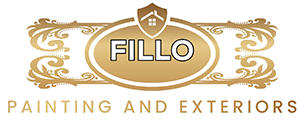 Cave people decorated their living spaces with carvings, and color probably derived from colored earth, soot, and other organic materials mixed with blood and fatty oils from animals. At least three thousand years ago, ancient Egyptians used paints made by mixing oil or fat with lead, earth minerals, animal blood, or ground semiprecious stones and glass. Also, egg tempera, gums, and resins were likely used. Their colors have withstood the test of time on papyrus, stone, and wood. Vibrant red, yellow, green, black, blue, and white decorated living spaces and furnishings of the ruling class, and still exist on tapestries, jewelry, ivory, other art media, and the walls in tombs.
Cave people decorated their living spaces with carvings, and color probably derived from colored earth, soot, and other organic materials mixed with blood and fatty oils from animals. At least three thousand years ago, ancient Egyptians used paints made by mixing oil or fat with lead, earth minerals, animal blood, or ground semiprecious stones and glass. Also, egg tempera, gums, and resins were likely used. Their colors have withstood the test of time on papyrus, stone, and wood. Vibrant red, yellow, green, black, blue, and white decorated living spaces and furnishings of the ruling class, and still exist on tapestries, jewelry, ivory, other art media, and the walls in tombs.
From Painting to Plain Wood
As early as the 1200s, house painting was evident. Exterior painting became a respected profession in the 1400s, with closely guarded secrets regarding their paint mixing and application skills. However, in the 1650s, the Pilgrims frowned on the practice, looking at house painting as vanity and pretentiousness. Interior painting continued despite their objections. The base for paint was oil or water, mixed with materials such as lead, iron or copper oxide, coffee, rice, eggs, fruits, berries, and other vegetation, that could be made into a desirable color. The tools used were similar to what we use today, a wooden handle with different types of hair attached. Modern paintbrushes are made with synthetic fibers, but basically work the same way.
Our Modern World of Color
Thanks to many innovations over the years since 1718 and onward, from grinding pigment, using linseed oil as a binding agent, paint cans that can be resealed, chemistry to improve color mixing and production, and computer-based color-matching programs, a painting contractor in Kennesaw, GA, can paint your house whatever color you desire. Color adds life to the exterior and ambiance to the interior of homes. Because of the work and experimentation of those who came long before, people can experience the infinite color choices of today.
